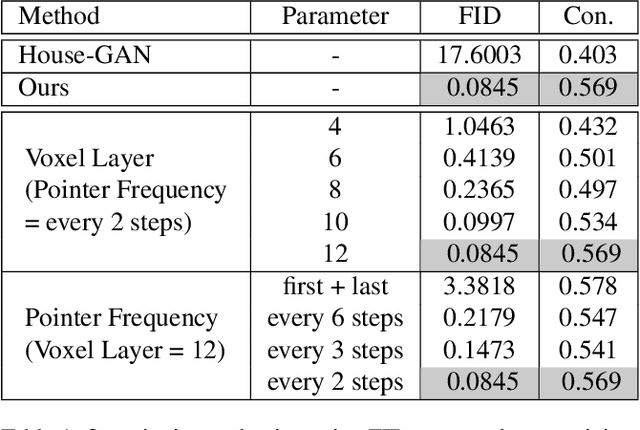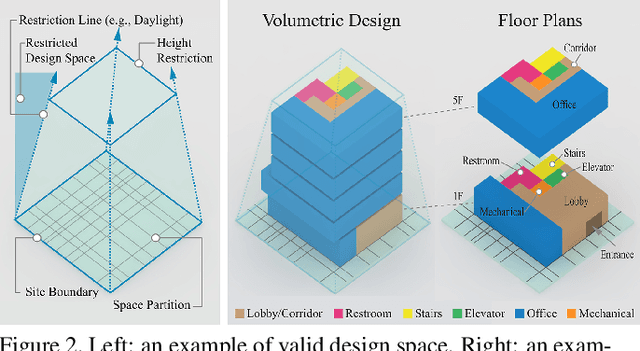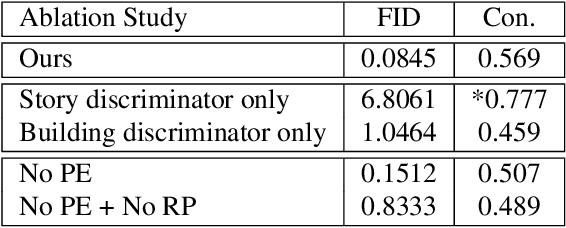Yoshito Tsuji
Automatic Measures for Evaluating Generative Design Methods for Architects
Mar 20, 2023Abstract:The recent explosion of high-quality image-to-image methods has prompted interest in applying image-to-image methods towards artistic and design tasks. Of interest for architects is to use these methods to generate design proposals from conceptual sketches, usually hand-drawn sketches that are quickly developed and can embody a design intent. More specifically, instantiating a sketch into a visual that can be used to elicit client feedback is typically a time consuming task, and being able to speed up this iteration time is important. While the body of work in generative methods has been impressive, there has been a mismatch between the quality measures used to evaluate the outputs of these systems and the actual expectations of architects. In particular, most recent image-based works place an emphasis on realism of generated images. While important, this is one of several criteria architects look for. In this work, we describe the expectations architects have for design proposals from conceptual sketches, and identify corresponding automated metrics from the literature. We then evaluate several image-to-image generative methods that may address these criteria and examine their performance across these metrics. From these results, we identify certain challenges with hand-drawn conceptual sketches and describe possible future avenues of investigation to address them.
Building-GAN: Graph-Conditioned Architectural Volumetric Design Generation
Apr 27, 2021



Abstract:Volumetric design is the first and critical step for professional building design, where architects not only depict the rough 3D geometry of the building but also specify the programs to form a 2D layout on each floor. Though 2D layout generation for a single story has been widely studied, there is no developed method for multi-story buildings. This paper focuses on volumetric design generation conditioned on an input program graph. Instead of outputting dense 3D voxels, we propose a new 3D representation named voxel graph that is both compact and expressive for building geometries. Our generator is a cross-modal graph neural network that uses a pointer mechanism to connect the input program graph and the output voxel graph, and the whole pipeline is trained using the adversarial framework. The generated designs are evaluated qualitatively by a user study and quantitatively using three metrics: quality, diversity, and connectivity accuracy. We show that our model generates realistic 3D volumetric designs and outperforms previous methods and baselines.
 Add to Chrome
Add to Chrome Add to Firefox
Add to Firefox Add to Edge
Add to Edge